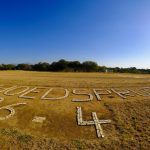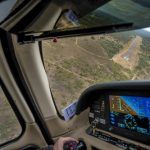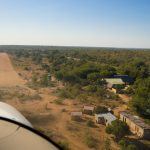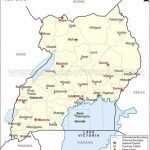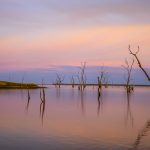Something special of flying to bush strips in Africa is flying into these unpaved airfields at night. All of these airfields need to be approached carefully where you normally first sweep the runway by making a low pass with some engine noise as to scare away any possible wild animals on or near the runway. This works most of the time, but not always. In some cases, the wild animals stay around. It is always best to have someone on the ground with a vehicle that can drive up and down the runway just before you land to clear it and to assure you can land save without meeting obstructions. This becomes especially important when landing in the dark. In that case, be sure you are fully familiar with the airstrip, have someone on the ground to assist and ideally establish radio contact with the people on the ground to make sure the runway is ‘clear to land’.
In this example case, the airstrip is officially 750 meter long but the canopy of some trees near the threshold cover part of the runway as they grew over the years. And on the other end of the runway, a water tower was placed quite close to the side of the runway. So practically there is only about 500 meter left to use on this airstrip.
Night VFR is allowed in South Africa, but be aware that your validated license (based on a foreign license) might be restricted to daytime VFR only, even if your original license allows you to fly night-VFR or even IFR.
In the video above I am doing the run-up check while the runway is lighted with lanterns for a bush airstrip departure. As it is dark, it is essential that you have a way to be sure that the runway is unobstructed when you depart.
There are several ways the runway can be lighted for your arrival. One way is to use the headlights of one or more safari vehicles to point you to the runway. Alternatively, paraffin lighted lanterns can be used as in this case.
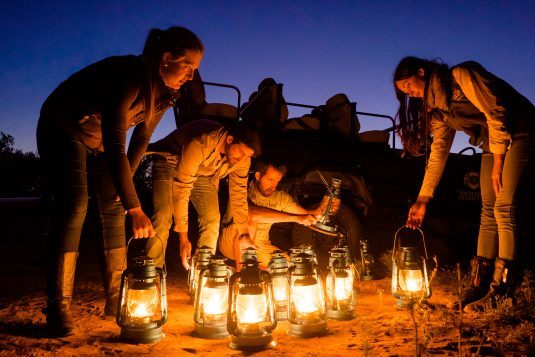
Paraffin lanterns are prepared for my arrival into the airfield.
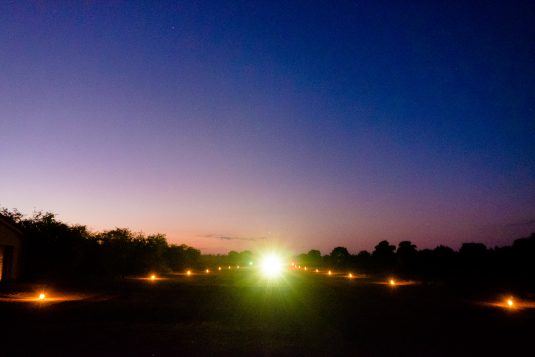
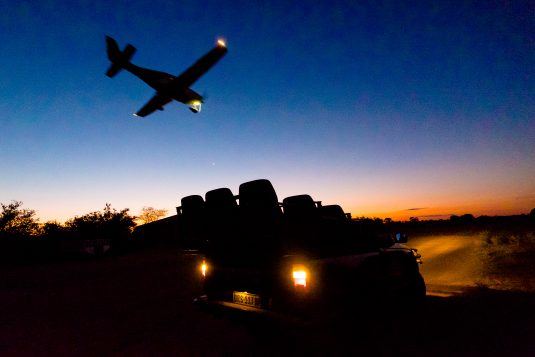
Two ways to lighten a dirt strip in the bush: by the headlights of a vehicle or using lanterns to lighten the runway edge.
In one situation I landed on a unpaved bush strip when it was nearly dark and saw a leopard jumping away just in front of my propellor. A rare sight, but finding impala or even hippos, rhino, elephants or lions near or on the runway is something you have to take into consideration as a possibility. So, always be aware and alert.
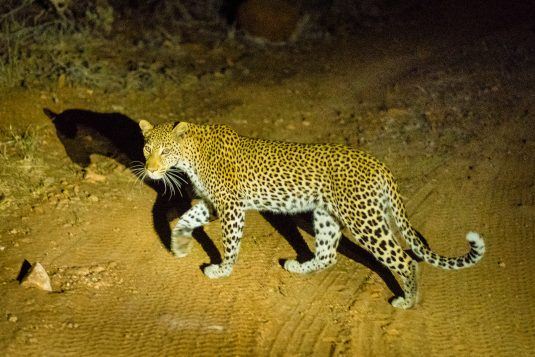
Here I am approaching the airstrip with a Cirrus SR22 a little fast. However, there is still this small water tower on the right-hand side abeam the threshold and a hangar building on the left to deal with before I can sink in. With lower speed, I would have needed less runway to flare, land and stop.
Nightfall can come very fast if you fly in Africa. Have a good plan and a nearby alternate to fly to which can still accept you in case you cannot land in the bush for whatever reason.
For guided self-fly adventures tours: https://www.africanflyingadventures.com
